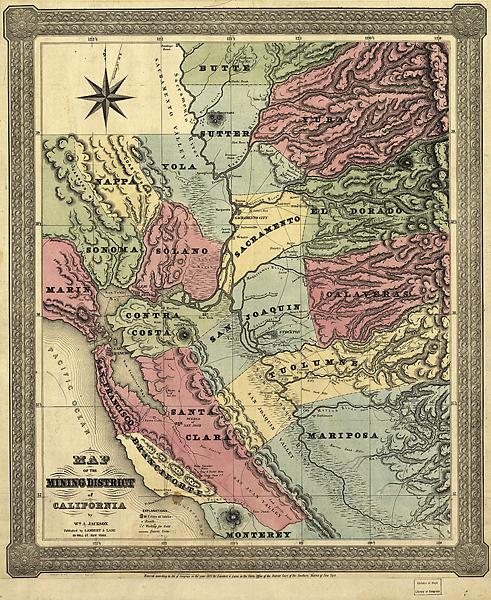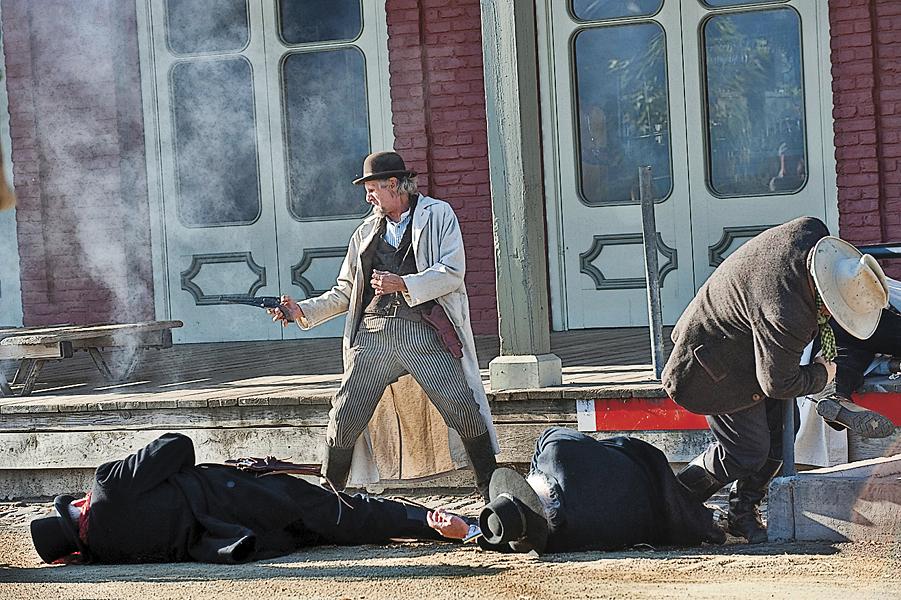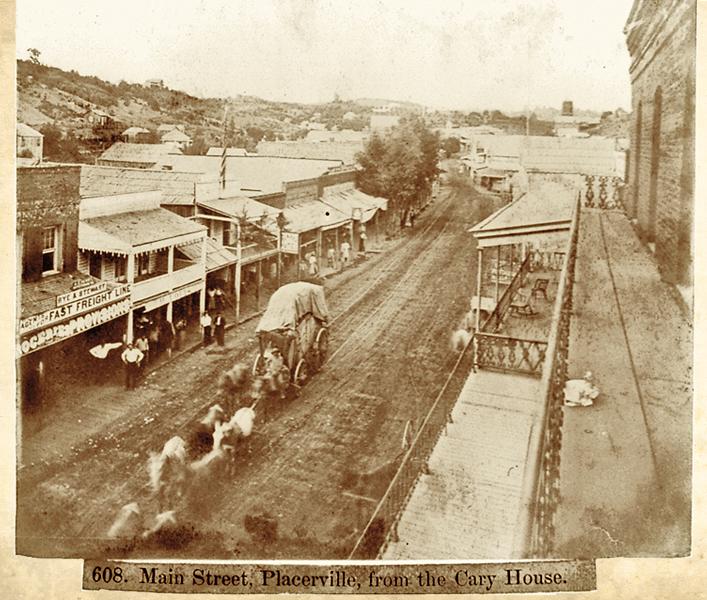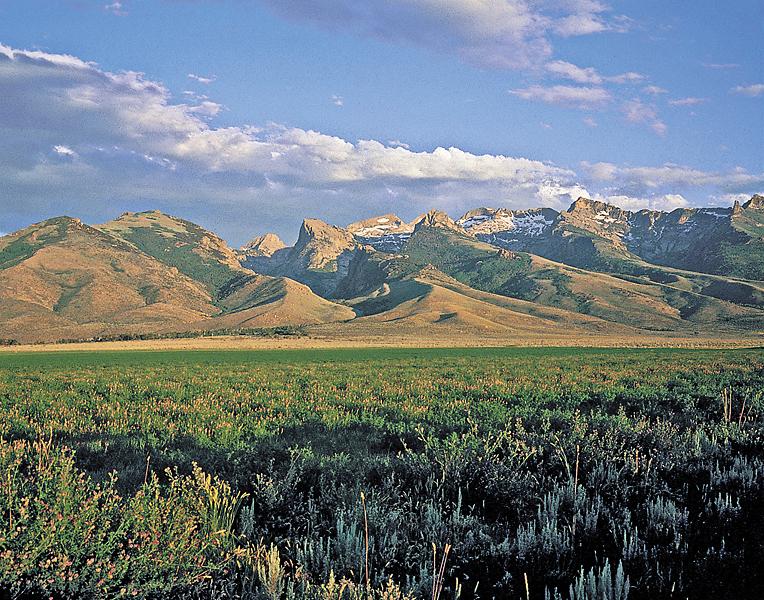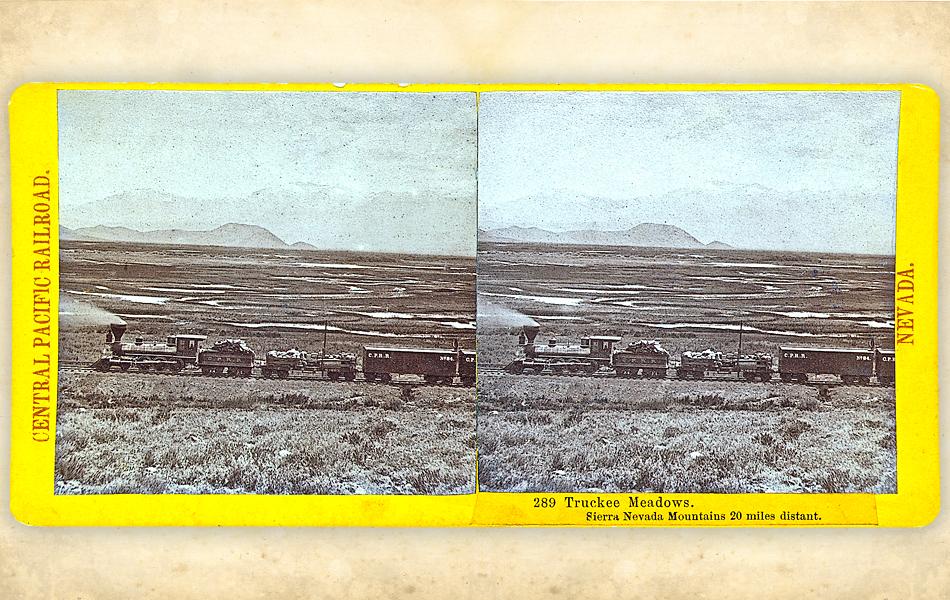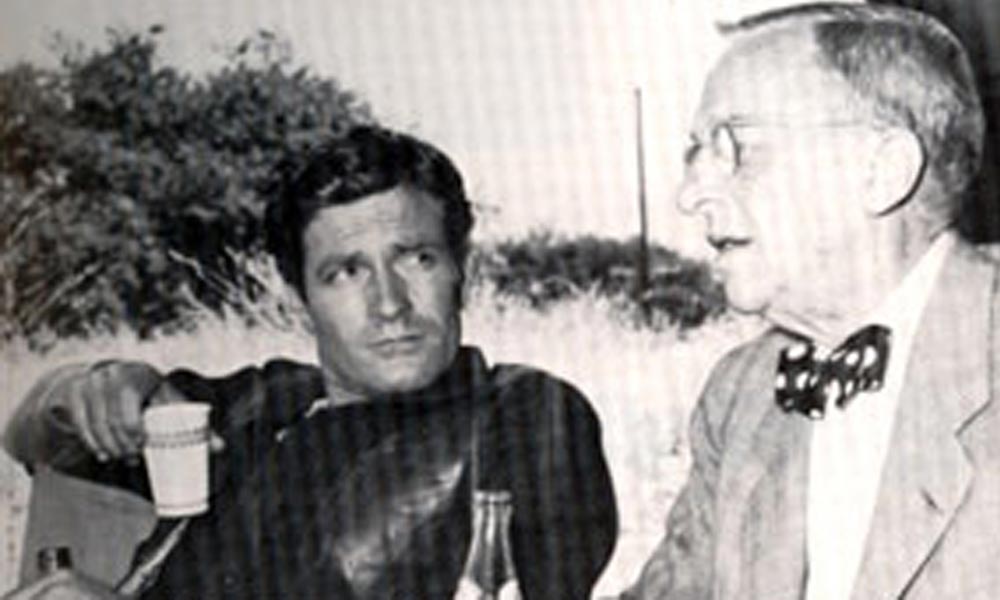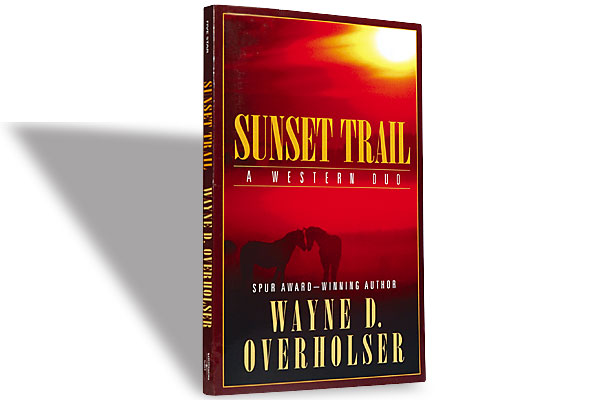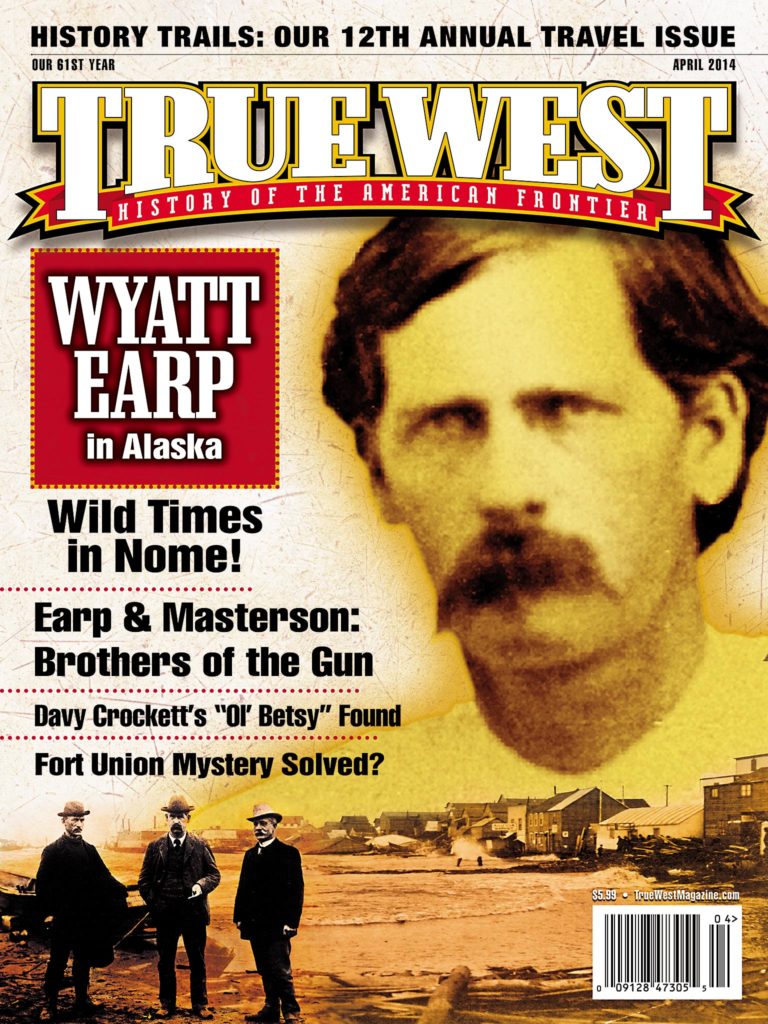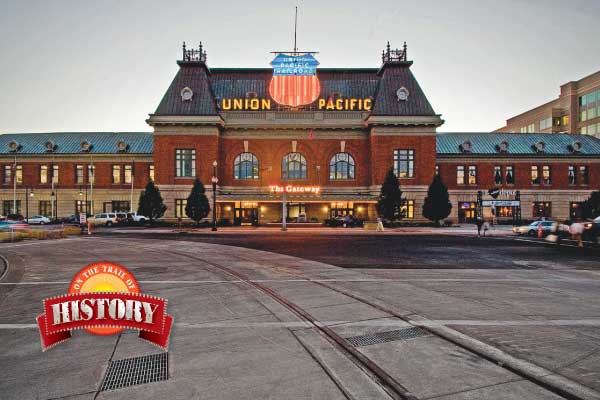 The California Trail conjures up images of emigrants and gold seekers, mountain men and Mormons, as well as the hopefulness of new lands that boosters compared to the “deep, rich, alluvial soil of the Nile.”
The California Trail conjures up images of emigrants and gold seekers, mountain men and Mormons, as well as the hopefulness of new lands that boosters compared to the “deep, rich, alluvial soil of the Nile.”
Yet, the horrors of the trail humble even the modern traveler when reminded of the suffering and tragedy that befell so many in search of new beginnings in the promised land, such as befell the Donner Party: “Hunger and cold, deep snow!…firewood harder to get as the men grow weaker…the first death—a young man gone, not from starvation, but from malnutrition or mere despondency….”
Even before gold was discovered in 1848 at Sutter’s Mill in California, emigrants were traveling on the California Trail over three cutoffs from the Oregon Trail, two from southeastern Idaho, and one to Salt Lake City on the Mormon Trail from Fort Bridger. The route to the growing religious community near the Great Salt Lake and across the Utah desert to Nevada became known as Hastings Cutoff for the entrepreneurial-adventurer Lansford W. Hastings, the author of the famous guidebook, The Emigrants’ Guide to Oregon and California. The route to California’s fertile valleys became a controversial trail for gold seekers and emigrants, who could trade with Mormon settlers before they crossed the Humboldt Desert and the Sierra Nevada, but also led to deadly delays and confusion for emigrants, including the ill-fated Donner-Reed Party.
Start your California Trail adventure in downtown Salt Lake City at Temple Square and take the tour of the historical sites, including the public portion of the Salt Lake Temple, the Museum of Church History and Art, and Brigham Young’s residence, the Beehive House. After a visit to the state capitol, drive east of downtown to the Utah Museum of Natural History, Fort Douglas Military Museum and “This is the Place” State Park. The natural history museum provides the traveler with an excellent introduction to the dramatic geologic history of the region, while Fort Douglas, founded in 1862, and “This is the Place” provide historical context to the significance of the Mormon settlement of Utah in 1847.
Salt Lake to Reno
With a good night’s rest in Salt Lake, trail seekers should head west on Interstate 80 to Grantsville off exit 99 on Utah 138 to visit the pioneer Benson Grist Mill and the Donner-Reed Pioneer Museum at Grantsville Fort. The museum is in a one-room adobe schoolhouse built in 1861 and is open through appointment at Grantsville City Hall. Summer travelers who cross the desert to Nevada and California’s Sierra Nevada should remember this lonely outpost of the ill-fated Donner-Reed Party. After leaving the Mormon settlements the emigrants faced months on the desert trail, rather than the well-maintained interstate highway of the 21st century, which could only be imagined 165 years ago, as Science Fiction.
From Grantsville, continue west on I-80 and take exit 4 to tour the Bonneville Salt Flats near the Utah state line. Managed by the Bureau of Land Management (BLM), the Salt Flats were a formidable challenge to emigrants crossing the California Trail. A short road leads out to the famous salt deposits, now known worldwide for its high-speed racing. One can only ponder the ironic difference between jet-engine cars racing each other and ox-driven Conestoga wagons’ three-miles-an-hour pace for survival on these ancient salt beds.
Visitors should stop at the Nevada Welcome Center in Wendover, which has plenty of air-conditioned rooms for the historic trail seeker who desires a little respite from desert travel. Wendover grew in importance in the early 1900s after a railroad was built, followed by salt flat racers, U.S. 40 and Wendover Air Base, where B-29 crews, including the Enola Gay, trained for the war against Japan.
Traveling west on I-80 across the Goshute Valley, you will see the landmark 10,716-foot Pilot Peak (a crucial way stop for emigrants after crossing the Great Salt Lake Desert on Hastings Cutoff) due north as the highway climbs through the Great Basin, past the aptly named town of Oasis and a rest stop at Pequop Summit, 6,650 feet above sea level, the highest point on the old trail between the Wasatch Mountains and Donner Pass.
Sixty miles past Wendover, the town of Wells was one of the most important rest stops on the California Trail. The Humboldt Wells’ springs and fresh grass offered an oasis to weary emigrants and their livestock. In the 1860s, the springs brought the Central Pacific Railroad and the construction of a historic district that still awaits renovation after a 2008 earthquake. Adventurous trail seekers should contact the BLM for directions north on U.S. 93 to the California Trail Back Country Byway, which is almost 100 miles of back roads, half of which are alongside or near the rutted route of bonanza seekers and California emigrants.
From Wells to Elko, the East Humboldt Range and its 10,000-foot peaks dominate the southern horizon, with a nice scenic route into the Ruby Mountains to Lamoille accessible from Halleck or Elko. Visitors should plan on spending a day or two in Elko touring the Northeastern Nevada Museum, Western Folklife Center (home to the annual National Cowboy Poetry Gathering every January) and the California Trail Interpretive Center.
From Elko, Battle Mountain, in the heart of historic Shoshone Indian territory, is about halfway to Winnemucca, and is a crossroads for two of the state’s longest, loneliest roads, Nevada 305, which leads to the former county seat and historic Lincoln Highway town of Austin, and Nevada 121, a desert back road strictly for
the adventurous.
Winnemucca, a historical crossroads oasis for thousands of years, is a good overnight stay after Elko, with the Humboldt Museum and Buckaroo Hall of Fame as excellent way stops for the curious California Trail traveler. The chamber of commerce has an excellent tour of the historic town, which includes a bank that Butch Cassidy’s gang robbed.
The final leg of the Nevada tour leaves I-80 at Wadsworth, exit 46, to Silver Springs and historic U.S. 50 to the old mining communities of Dayton and Virginia City. The Dayton Museum and Mark Twain Museum will give the cross-country traveler good introductions to their towns’ storied histories. In Reno, emigrants for decades stopped at Truckee Meadows (named for the Paiute chief who helped the Stevens Party of 1844 find the river from the Humboldt Sink) before crossing into the Sierra Nevada. The Nevada State Historical Society Museum and W.M. Keck Museum provide excellent historical exhibitions on the region.
Reno to Sacramento
Travelers from Reno to Sacramento will experience the dramatic geography of the 19th-century emigrants, albeit in the comfort of their modern vehicles on well-graded, paved highways. The first stop in the Sierra Nevada area off I-80 should be California’s Donner Memorial State Park and the Emigrant Trail Museum. After touring the park, visit the historic district of Truckee before reaching scenic Lake Tahoe. Enjoy the natural beauty of the region while touring its historic sites, including museums in Tahoe City and South Lake Tahoe, and a lake tour on one of the famed steamboats, where you might even meet the ghost of Mark Twain.
To reach the “Carson Route” across the Sierra Nevada, take California 89 to another leg of historic U.S. 50, which heads west along Kit Carson’s route to Sacramento. Enjoy the highway as it winds its way through the Sierras to historic Placerville, which is just a few miles south from the Marshall Gold Discovery State Historic Park on California 49 near Coloma. I highly recommend that you spend a few days in California’s Gold Country, which is filled with historic sites, museums, quaint towns and inns, many of which are north and south of U.S. 50 on California Highway 49.
With the Sierra Nevada to the east and the Pacific to the west, California Trail travelers will find Sacramento rich in Western history. Whether you plan on completing your tour in the capital city, beacon of gold miners, emigrants and entrepreneurs, or heading on to the coast, stop and enjoy the end of the trail with tours of the state capitol, Old Sacramento, the California Railroad Museum and Sutter’s Fort State Historic Park. After experiencing the California Trail from Salt Lake to Sacramento, crossing the deserts and mountains, paying homage to those who suffered in the Donner Party, a quiet walking tour of the humble grounds of Sutter’s Fort will provide the modern trail seeker a poignant appreciation for the determination and sacrifice which drove men and women to cross the continent, against all odds, to reach their California Shangri-La of fertile farm valleys, gold mines and entrepreneurial opportunity.
* For more great Western heritage travel adventures please click on the links below.
- On the Trail of Old Arizona
- Texas Hill Country Trail: Cavalry, Cowboys and Germans
- Following North Dakota’s Sheyenne River
- Rambles Through the Nebraska Panhandle
- The Bozeman Trail
Photo Gallery
– Courtesy Library of Congress –
– Courtesy VisitCalifornia –
– Courtesy Library of Congress –
– Courtesy Nevada Tourism –
– Courtesy Library of Congress –


